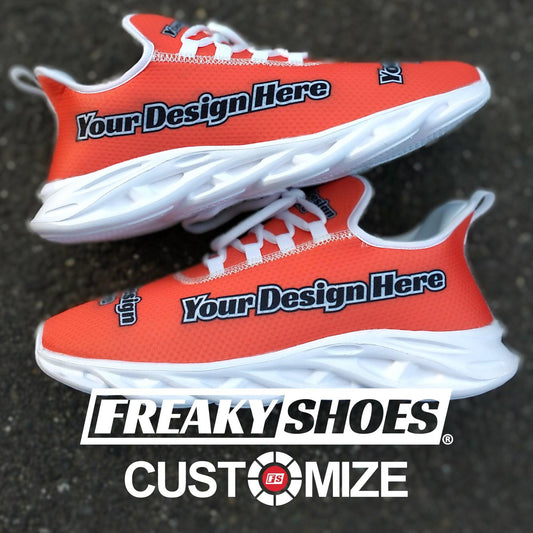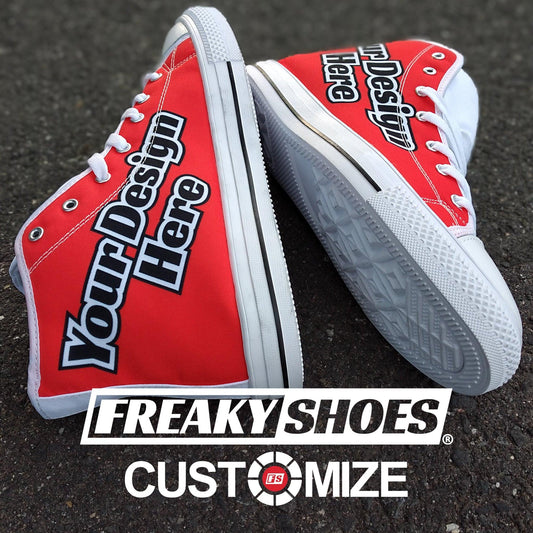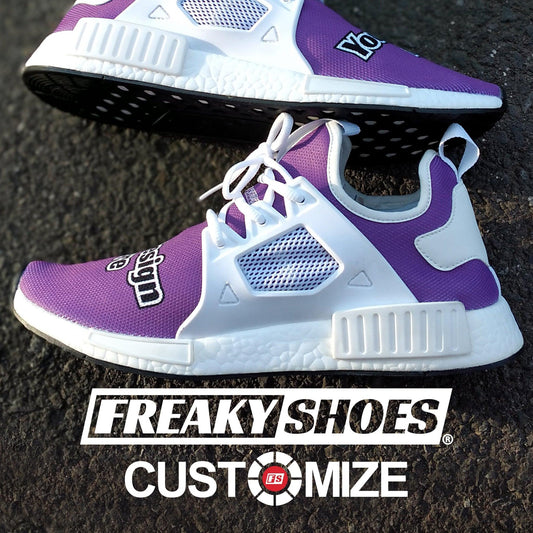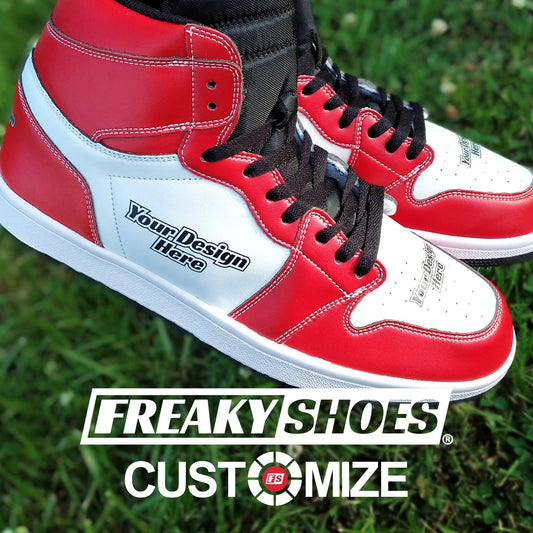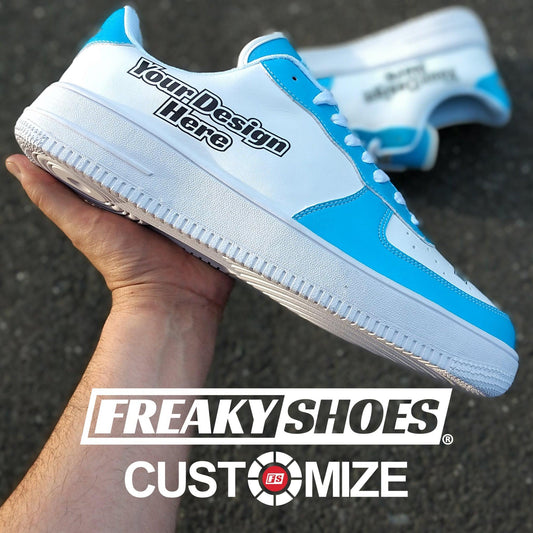If you’re wondering how to turn any shoes into non-slip shoes, then this guide is for you. It’s super easy to do.
To make your shoes non-slip, start by roughening the soles with sandpaper or a nail file. This helps create better grip on smooth floors. You can also apply a thin layer of hot glue or silicone to the bottom for added traction. If you prefer something quicker, stick non-slip pads or grip tape under the heels and balls of the shoes. Walking on rough concrete for a few minutes can also help wear in the soles naturally.
We’ve tested 20 methods ourselves, so what you’ll read here is based on real results. Stick around till the end, because we’ll also tell you what worked best for us.
Key Takeaways
-
You can fix slippery shoes at home with things like glue, sandpaper, or spray.
-
Hot glue dots or lines on the sole add instant grip that lasts.
-
Stick-on rubber pads work great for dress shoes and heels.
-
Sandpaper helps roughen shiny soles so they don’t slide.
-
Hairspray gives quick but short-term grip for indoor use.
-
Stair tape and textured sprays work well for boots and work shoes.
-
Cobblers can replace your soles with professional non-slip ones.
-
Not every method works the same, so testing is key.
20 Easy Ways To Turn Any Shoes Into Non-Slip Shoes
You can make your shoes non-slip by using easy DIY fixes that improve traction on smooth or wet floors. These methods include:
-
Adding grip with glue
-
Roughing up the sole
-
Attaching rubber pads.
They’re fast, safe, and work on most types of shoes like sneakers, dress shoes, boots, and even heels.
1. Sandpaper Method
To make your shoes non-slip, rubbing sandpaper on the bottom helps roughen the surface. This is one of the simplest ways to make shoes less slippery, especially when they’re brand new.
Here’s exactly how we do it:
-
Use coarse sandpaper, ideally 50 to 60 grit.
-
Hold the shoe steady and rub the sandpaper on the sole in small circles.
-
Focus more on the heel and the front part, where your foot lands when you walk.
-
Keep going until the bottom feels a bit rough, not smooth.
-
Wipe off the dust with a clean cloth before wearing the shoes.
2. Knife Scoring Method
If the sole is smooth, it can't grip the floor well. Making light cuts into the rubber creates little edges that help with traction. This is what we do when old dress shoes start sliding on tile or polished floors.
You can follow this exact method:
-
Use a sharp utility knife or box cutter.
-
Hold the shoe so you can clearly see the sole.
-
Lightly score diagonal lines across the bottom.
-
Then score lines in the opposite direction to form a crisscross pattern.
-
Keep the cuts shallow so you don’t damage the sole.
-
Check the surface by gently rubbing your fingers over it. You should feel the grooves.
3. Hot Glue Grip
Hot glue turns into a textured, rubbery layer when it dries. This gives your shoes more grip without changing how they look from the top. We’ve done this on everything from kids’ sneakers to flat work shoes, and it works really well.
Here’s how you can turn your shoes non-slip:
-
Plug in your glue gun and let it fully heat up.
-
Flip your shoe over so the sole is facing up.
-
Squeeze out small dots or wavy lines across the surface.
-
Let the glue dry completely. This takes about 30 to 45 minutes.
-
Once dry, press on the glue to make sure it feels solid and rubbery.
-
Walk around on a smooth floor to test how it feels.
4. Anti-Slip Spray
Anti-slip spray is a clear coating that adds texture to your shoe’s sole. It’s especially helpful when you want something that doesn't look or feel bulky. We've used this on both leather soles and boots before rainy days.
You can follow these steps to do it at home:
-
Start by cleaning the sole with a damp cloth and let it dry.
-
Shake the spray bottle well before use.
-
Hold it about six inches from the sole.
-
Spray a light, even layer over the bottom of the shoe.
-
Let it dry for at least three hours before wearing them.
-
If the grip starts to fade, just reapply the spray.
5. Rubber Sole Pads
To turn your shoes non-slip, use rubber sole pads. Rubber sole pads are small, sticky pieces you attach to the bottom of your shoes. They create grip immediately. This method is perfect if you want something long-lasting without using glue or making changes to the shoe itself.
We usually use these for formal shoes that don’t have any grip. Here’s how to put them on properly:
-
Clean the sole with a dry cloth and remove any dust or dirt.
-
Peel off the backing from the rubber pad.
-
Line it up with the ball of the foot or the area that hits the ground most.
-
Press down hard with your fingers for 30 seconds to lock it in.
-
Avoid wearing the shoes for one hour to let the adhesive bond.
-
Replace the pads after a few weeks if they start to peel or wear down.
6. Adhesive Bandage Fix
When you’re in a rush and your shoes are too slippery, sticking an adhesive bandage under the sole gives temporary grip. It’s not meant to last long, but it can stop you from slipping during short events.
Here’s how to do it when you need a quick fix:
-
Grab two large adhesive bandages or strips of medical tape.
-
Clean the bottom of your shoes to help them stick better.
-
Press one bandage onto the ball of each shoe’s sole.
-
Smooth it down so there are no loose edges.
-
Walk around for a bit to test the grip.
-
Replace the bandages after each wear or if they get dirty.
7. Sand and Glue Mix
Here’s what you need to do to turn your shoes non-slip:
-
Pour clear-drying glue into a small dish or cup.
-
Add a spoonful of fine sand and stir it until it forms a thick paste.
-
Use a small brush to spread the mixture evenly across the bottom of your shoes.
-
Cover the heel, ball, and any area that touches the ground.
-
Leave the shoes to dry overnight in a clean spot.
-
Before wearing them, check that the surface is fully dry and solid.
8. Concrete Scuffing
If your soles are too smooth, rubbing them on rough concrete helps make them grippier. The pavement scrapes away the slick finish and leaves behind a slightly rougher surface. We always do this with new shoes before wearing them on rainy days.
Here’s how to scuff your shoes safely:
-
Find a patch of rough concrete or sidewalk.
Hold onto something for balance, like a wall or railing. -
Rub the sole of one shoe against the concrete using twisting motions.
-
Focus on the heel and ball area for about two minutes.
-
Repeat with the other shoe.
-
Check the bottom to make sure the surface feels slightly rough.
9. Double-Sided Tape
Double-sided tape works well when you need a fast way to make your shoes slip-resistant. It helps on smooth indoor surfaces like tile or wood. Follow these simple steps:
-
Cut two strips of strong double-sided tape.
-
Stick one on the ball area and one near the heel of each shoe.
-
Press firmly to help them stay in place.
-
Walk around to test the grip before heading out.
-
Remove and replace the tape after each use since it wears off quickly.
10. Rubber Cement or Shoe Goo
Rubber cement and Shoe Goo dry into a flexible rubber surface that improves grip. It’s waterproof and sticks well to almost any sole. We’ve used this for both hiking boots and sneakers that started slipping on wet ground.
Here’s how to apply it for long-lasting results:
-
Clean the sole with a cloth and let it dry.
-
Squeeze a small amount of Shoe Goo or rubber cement onto the bottom.
-
Use a stick or old brush to spread a thin, even layer.
-
Focus on the heel and front section of the sole.
-
Let the shoes dry for at least 12 hours before walking in them.
-
Check the grip on a safe surface. Add a second coat if needed.
11. Plasti Dip Spray
Use Plasti Dip to make your shoes non-slip. It is a rubber coating that you can spray directly on the bottom of your shoes. It adds a soft, grippy layer that helps prevent slipping on smooth or wet surfaces. It’s a bit like giving your soles a rubber sole without changing the shoe itself.
Here’s how we apply it for solid traction:
-
Shake the can of Plasti Dip for at least 30 seconds.
-
Spray an even coat across the clean, dry sole of your shoes.
-
Let it dry for at least 4 to 5 hours.
-
If needed, add a second coat for extra grip.
-
Let the final layer cure fully before wearing the shoes.
12. Heel Grip Stickers
Heels often have small, smooth bottoms that make it easy to slip. Heel grip stickers are made to fit those tiny heel tips and give them better traction. This is how you attach them properly:
-
Buy traction pads designed specifically for high heels.
-
Clean the heel bottom thoroughly with a dry cloth.
-
Peel off the backing and carefully align the pad with the heel tip.
-
Press and hold for a few seconds to stick it firmly.
-
Wait a few minutes before walking to ensure it’s set.
13. Beeswax or Candle Wax
To make your shoes non-slip, follow these steps:
-
Rub a beeswax block or a candle directly onto the sole.
-
Make sure you coat the heel and ball of the foot area well.
-
After applying, walk on rough concrete or tile to spread the wax.
-
Reapply when the grip starts to fade or wear off.
14. Stair-Tread Tape
Anti-slip stair tape works surprisingly well on shoes, especially work boots or shoes you wear in the rain. It has a gritty texture and a strong adhesive that stays on even when wet.
Here’s how you make shoes non-slip DIY:
-
Cut a small strip of stair-tread tape to match your sole shape.
-
Clean and dry the shoe bottom completely.
-
Stick the tape onto the flat areas where your foot lands.
-
Press firmly along the entire strip.
-
Trim any edges that hang over the side of the sole.
15. Hair Spray
This is how we use it when we don’t have time for anything else:
-
Spray a generous amount directly on the clean sole.
-
Let it dry for one to two minutes.
-
Test the grip indoors to make sure it feels secure.
-
Reapply if it wears off after a while.
16. Silicone Sole Covers
Silicone sole covers slip over your entire shoe bottom. They add grip and are easy to take off. Here’s how to use them correctly:
-
Buy silicone shoe covers that match your shoe size.
-
Stretch and pull them over the sole until fully covered.
-
Check that they fit snug without slipping.
-
After use, remove and wash them with water to reuse next time.
17. Grip Insoles
Grip insoles don’t change the outside of your shoe, but they help stop your feet from sliding inside. This gives you more control, especially when walking fast or turning quickly. We’ve used them in both running shoes and dress shoes.
Here’s how to install them properly:
-
Buy textured or anti-slip insoles made for your shoe type.
-
Remove the old insoles if they’re loose or worn.
-
Place the new ones inside and adjust to fit snugly.
-
Walk around to check if they stay in place.
-
Replace them once the surface gets flat or smooth.
18. Professional Sole Replacement
If DIY methods aren’t giving enough grip, replacing the soles with professional anti-slip ones is the most reliable option. A shoe repair expert can do this for any type of shoe, and the results usually last for years.
This is how we get it done when we want a permanent fix:
-
Take your shoes to a cobbler or shoe repair shop.
-
Ask for anti-slip rubber soles as a replacement.
-
Let the cobbler glue or stitch them on properly.
-
Allow enough time for the glue to cure before wearing them.
-
Once ready, you’ll feel a huge difference in traction.
19. Grip Socks
Grip socks are socks with rubber dots or textured patterns on the bottom. They don’t fix the shoe itself, but they stop your foot from sliding around inside. They’re useful for slip-on shoes or loose-fitting sneakers.
Here’s how to use them for better stability:
-
Put on a clean pair of grip or yoga socks.
-
Slip your shoes on like usual.
-
Walk and test if your foot stays firmly in place.
-
Wash and replace the socks after regular use.
20. Textured Spray Paint
You can follow these steps to make any shoes non-slip:
-
Tape off the edges of the shoe to avoid spraying outside the sole.
-
Shake the can well to mix the paint.
-
Spray a thin, even layer across the sole from about six inches away.
-
Let the shoes dry overnight in a well-ventilated spot.
-
Test the grip in the morning and reapply if needed.
How to Make Shoes Non Slip DIY

You can make shoes non-slip at home using a few simple items you already have. Most DIY fixes focus on roughening the sole or adding a grippy layer that improves traction. These tricks help when your shoes slide on smooth or wet floors.
Here’s how you can do it yourself properly.
-
Use coarse sandpaper to rub the bottom of your shoes in small circles until it feels rough.
-
Apply a thin layer of clear-drying glue mixed with a bit of fine sand for better friction.
-
Let the mixture dry overnight before wearing the shoes again.
-
You can also spray anti-slip spray or add a few drops of hot glue in a dotted pattern on the sole.
-
Always test your shoes on a safe surface first to make sure they grip well.
How to Make Your Shoes Non Slip for Restaurant
Here’s what you can do to make your shoes non-slip for restaurant floors.
-
Clean your soles thoroughly to remove oil, dust, and food residue.
-
Apply rubber cement or Shoe Goo to the heel and ball of the foot area.
-
Spread it evenly and let it dry for at least 12 hours.
-
For a faster fix, use stick-on rubber sole pads that are made for work shoes.
-
Replace or reapply these after a few weeks of daily use.
How to Fix Slippery Rubber Soles

-
Rub the sole with coarse sandpaper to remove the smooth, shiny surface.
-
Use a sharp knife to lightly score the bottom in a crisscross pattern for extra traction.
-
Clean the dust off the sole and apply a thin layer of Shoe Goo for added grip.
-
Let the shoes dry completely before wearing them again.
-
Test the grip indoors and repeat if the surface still feels slick.
Does Hairspray Make Shoes Non Slip
Hairspray can make your shoes non-slip, but only for a short time. It creates a slightly sticky surface on the sole that helps on smooth indoor floors. It’s not a long-term fix, but it’s perfect when you just need quick grip.
Here’s how you can use hairspray to make shoes non-slip:
-
Clean the soles with a dry cloth to remove dust.
-
Spray a generous layer of hairspray evenly on the bottom.
-
Let it dry for one to two minutes so it becomes tacky.
-
Test the shoes indoors before walking on polished or tile floors.
-
Reapply the hairspray after a few hours or if the grip fades.
How to Make Shoes Non Slip on Ice
Follow these steps to make shoes non-slip on ice:
-
Attach silicone sole covers or rubber ice grips to the bottom of your shoes.
-
If you don’t have those, sprinkle a little sand or salt on Shoe Goo before it dries on your soles.
-
Let it set overnight to create a gritty layer.
-
You can also rough up your soles on concrete to improve traction slightly.
-
Always test your shoes outdoors carefully before walking long distances.
How to Make Shoes Non Slip with Hot Glue
Hot glue is one of the easiest ways to make your shoes non-slip. When it dries, it creates a textured rubber-like surface that gives you better traction. It works for most shoes, from sneakers to boots. It’s durable enough for daily use.
Here’s exactly how to make shoes non-slip with hot glue:
-
Plug in your hot glue gun and let it fully heat up.
-
Turn your shoes upside down and make sure the soles are clean.
-
Squeeze small dots or thin wavy lines across the bottom of the shoe.
-
Let the glue dry completely for about 30 to 45 minutes.
-
Press on the glue to check if it’s fully hardened before wearing the shoes.
-
Try them indoors first and reapply the glue if needed later.
Conclusion
To make any shoes non-slip, start by rubbing the bottoms on rough concrete or sandpaper. You can also apply a thin layer of hot glue or silicone to the soles and let it dry completely before wearing. If you want something quick, stick-on grip pads or traction stickers work really well.
Even spraying a bit of hair spray or applying a small amount of salt water on the soles can give temporary grip. These simple tricks make your shoes much safer to walk in on slippery floors.
If you liked the methods we've discussed here, then you will also love our other guide on How To Increase Grip Or Traction On Basketball Shoes.












